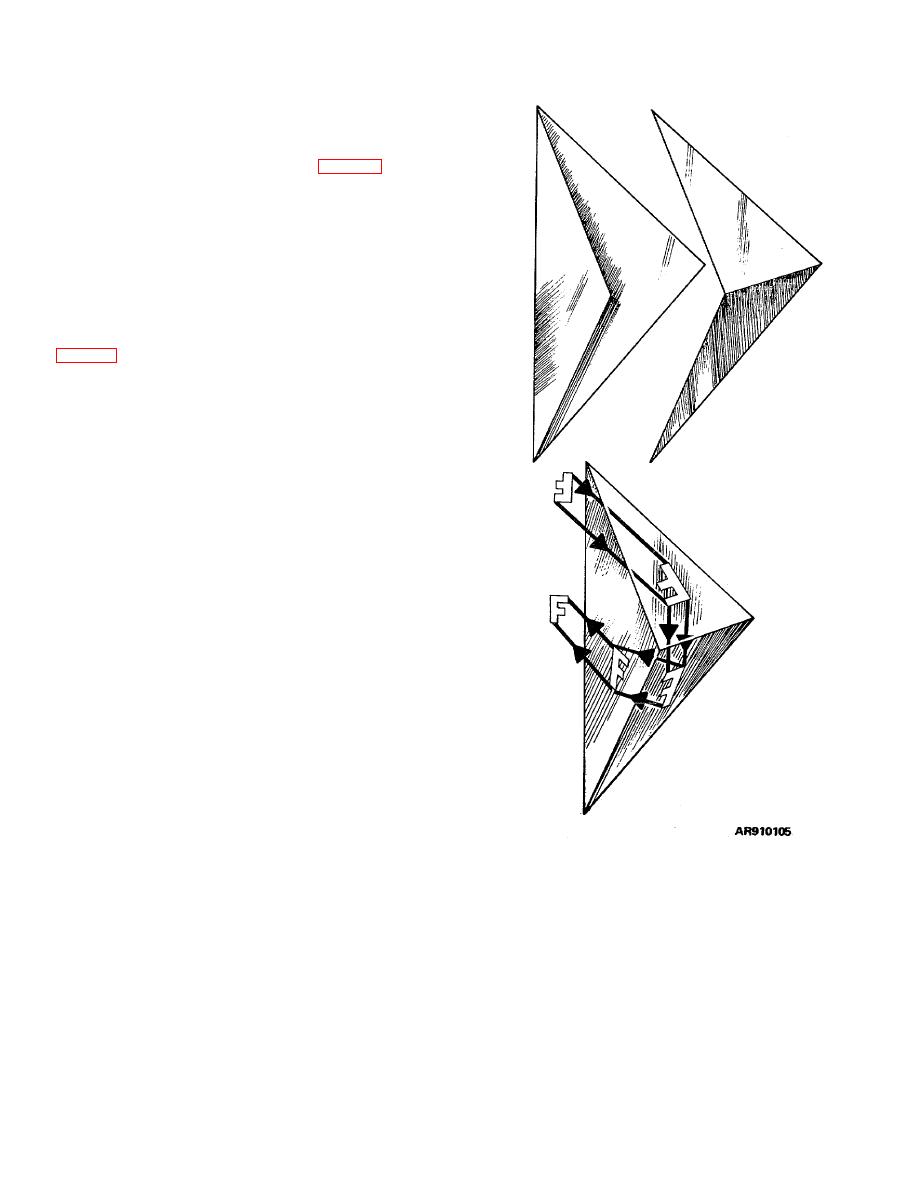 |
|||
|
|
|||
|
Page Title:
Figure 4-15. Triple mirror prism. |
|
||
| ||||||||||
|
|
 TM 9-258
(2) In the obsolete long base height finders, the
pentaprism that would be required would be so large that
it would be difficult to find blocks of glass sufficiently
large and homogeneous for the construction of such
prisms. Two mirrors were used to replace the two
reflecting surfaces of a pentaprism (C, fig 4-14). These
mirrors were fastened in a rigid mount at precisely the
same angles as the reflecting surfaces of the pentaprism
of the same size and produced the same effect. The
effects of temperature changes were eliminated insofar
as possible to hold the reflecting surfaces in the proper
relation to each other.
(3) This prism is known as a constant deviating
prism because it deviates light constantly 90ƒ regardless
of slight deviation of incident rays from the perpendicular.
i. Triple Mirror Prism. The triple mirror prism
can be reflecting surfaces. It may be considered as
consisting of two triangular roofs, one above and one
below, with the crests of the roofs at right angles to one
another. This prism has the unique property of deviation,
through an angle of 180ƒ, any ray of light entering it. If
the angles of this prism are accurately made, incident
light will be returned back along a course parallel to its
original path. It produces an inversion of the image.
Figure 4-15. Triple mirror prism.
4-18
|
|
Privacy Statement - Press Release - Copyright Information. - Contact Us |